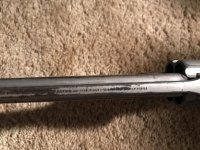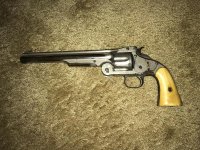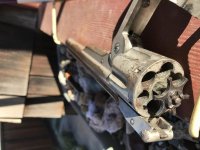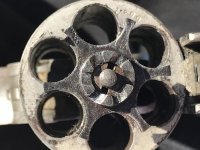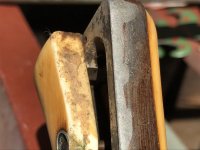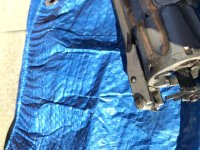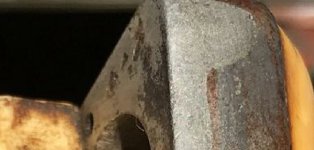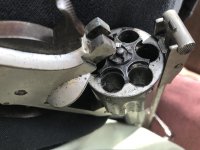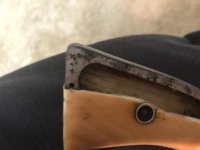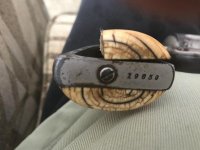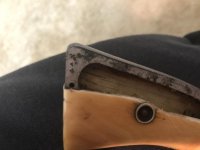Hello Sal,
Thank you for your comments re the imprinted characters on the grip. I noticed it as well. Though I don’t trust myself to remove the grips, I also see that the same imprint is on the cylinder. My guess is that both say, “U 99” with some sort of mark between the U and the 99.
More pics attached! Thanks!
Pam
Hi, Pam.
That is likely the (or part of) the "Assembly number" which should match, exactly, the assembly number / marks on the face of the cylinder, the underside of the latch, and the barrel. The barrel number in the deep recess at the very rear of the barrel, visible only with gun open and the latch raised, looking into the recess(es). May need a Q-tip to clean in there before it's readable.
I cannot make out exactly the grip frame stamp as when I enlarge the digital images you supplied and they "pixel" out before I can get a good "read" on them.
Should your curiosity be satisfied at this point, you can stop, however, a much closer look is needed if you truly want to know. Take a 10x power (or higher) magnifier to examine again and report back to us.
Assembly numbers usually consist of a combination of one letter and one number or a combination of 3 alpha-numeric characters which sometime include a punch mark (period) either in-between or "as" one of those digits.
If all assembly numbers / markings match, exactly, that means you have all the original parts, as manufactured back in the early 1870s.
After that, I cannot make a definitive judgement call one way or the other if the finish is original or a quality refinish but ... at a glance ... it looks OK. As other members noted the lines are straight, the edges are sharp (these are good things, LOL).
All the best, Sal



